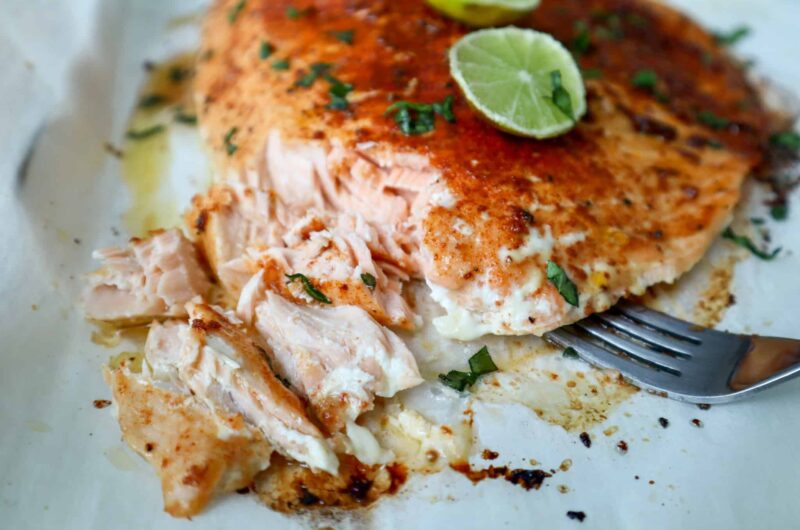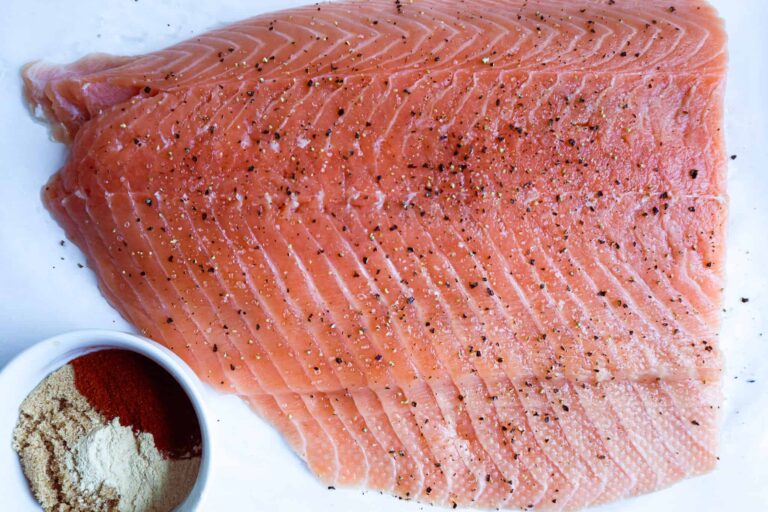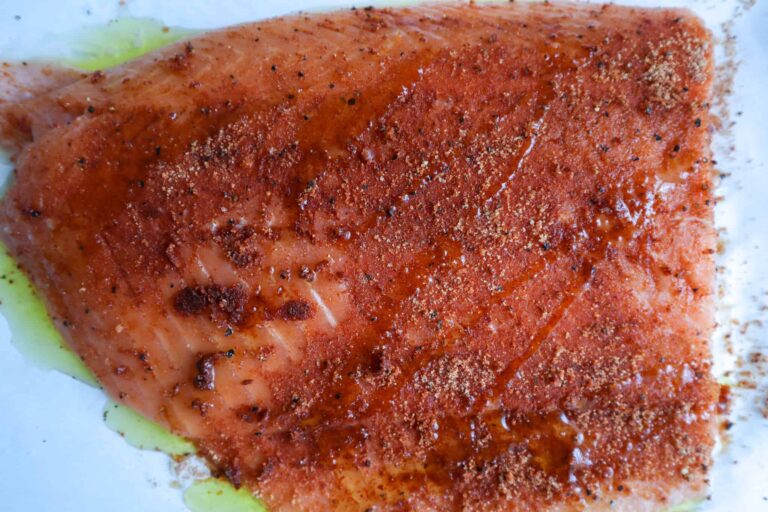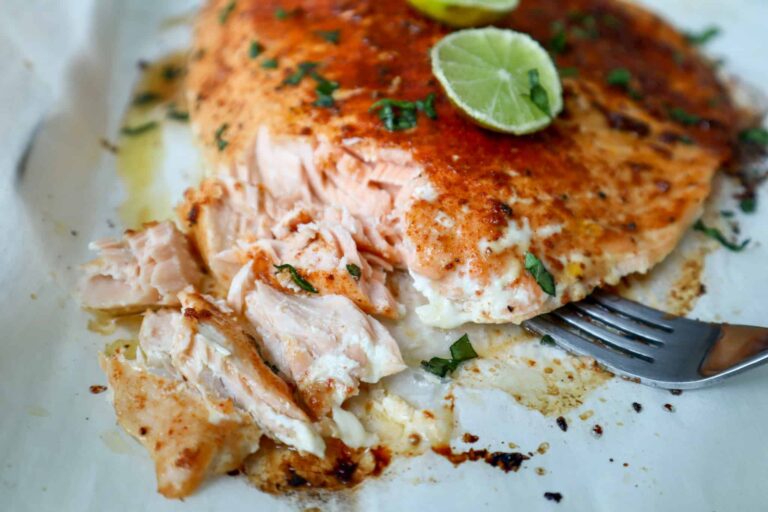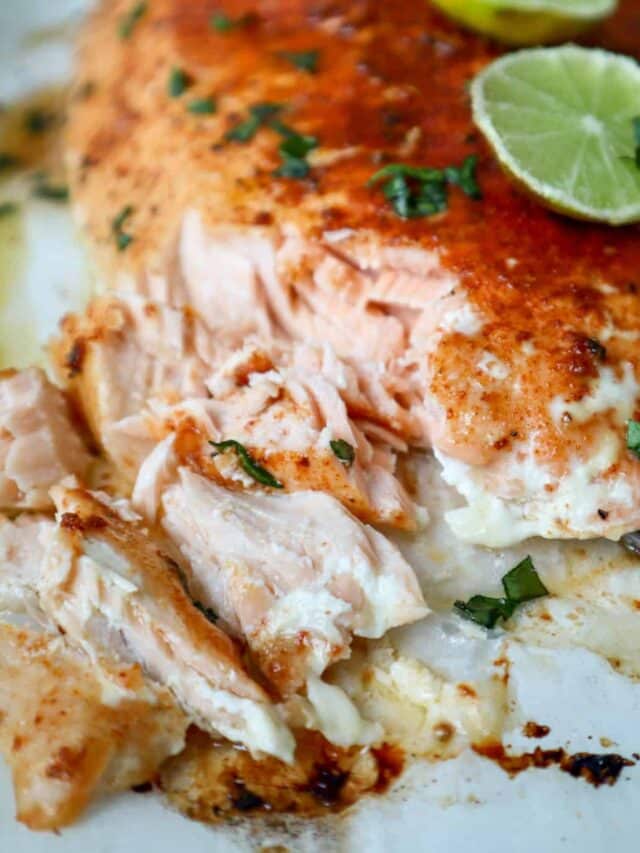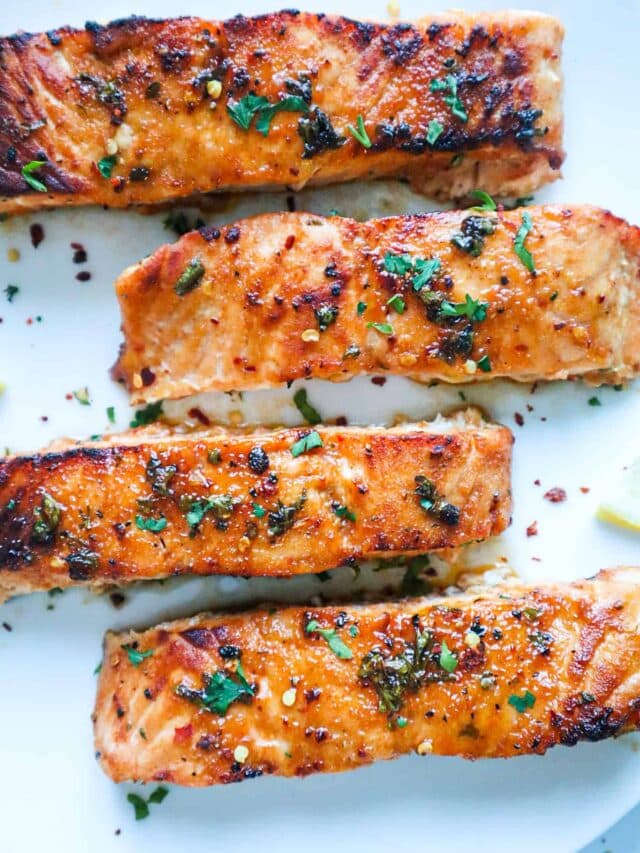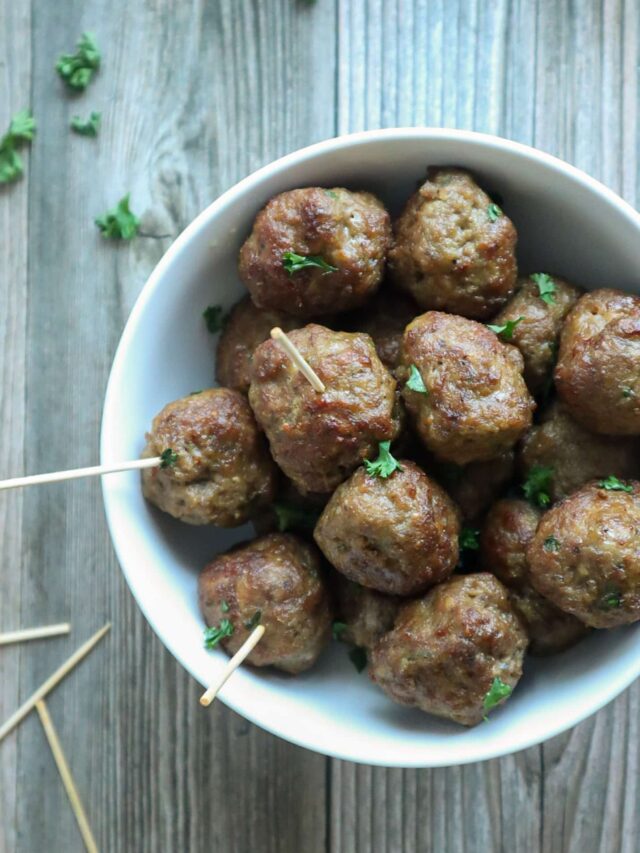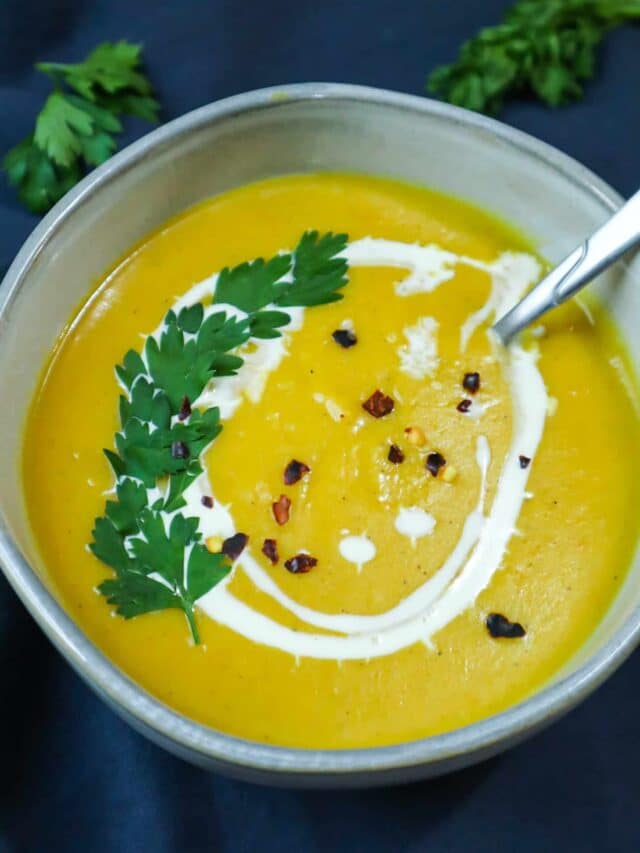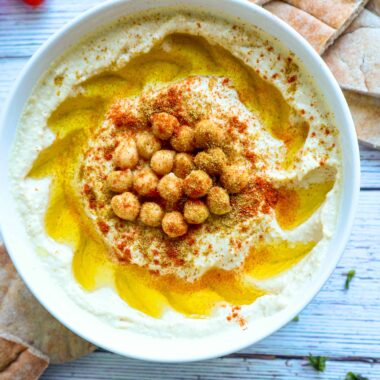This healthy baked salmon recipe is my go-to when I am out of time and ideas. Salmon is my favorite fish to cook, it’s available everywhere, and it’s super healthy. What’s not to like? Salmon can be cooked in many ways; In this recipe, I will be baking it in the oven, but stay tuned for an air fryer salmon recipe soon!
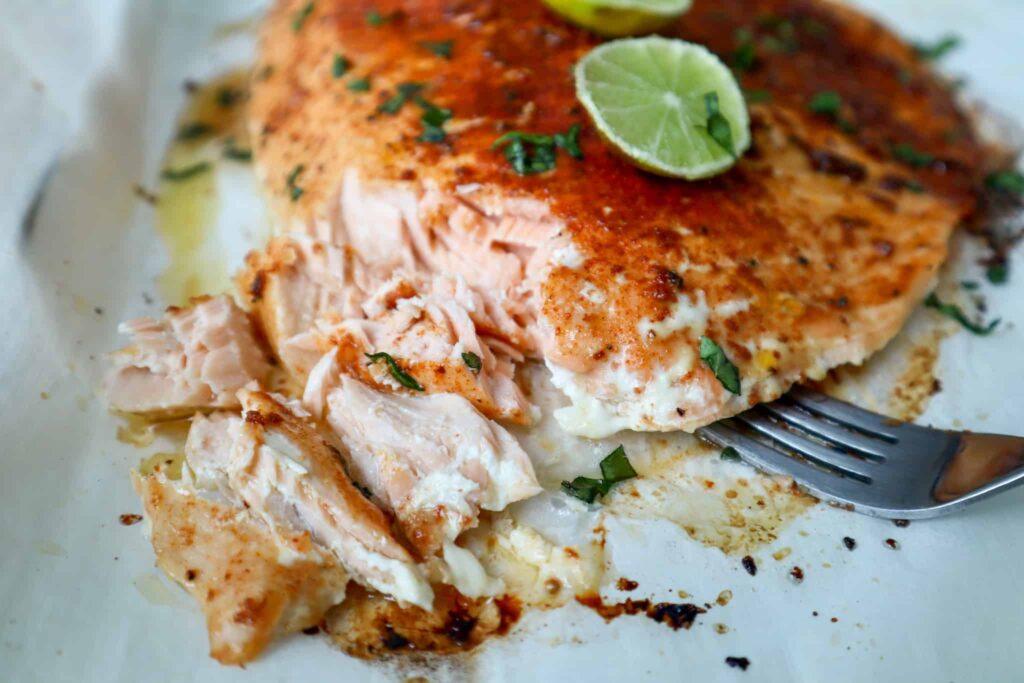
Is baked Salmon good for weight loss?
Salmon is one of the most nutritious foods on the planet! Consuming Salmon frequently can help you lose weight and keep it off, and it also helps maintain a healthy brain and body. Research suggests that exercise coupled with a diet high in fish oil can help reduce your waistline! (1)
Why is salmon good for you?
1 – Salmon is rich in omega 3 fatty acids, which have fantastic health benefits, such as reducing inflammation, lowering blood pressure, decreasing the risk of cancer, and improving the function of the cells that line your arteries. (2,3,4,5,6)
2 – It’s a great source of protein, which helps you feel full by regulating the hormones that control appetite. In simple terms, you get to eat what you like (In moderation, of course) and still lose weight 🙂 (7)
3 – It’s full of B vitamins, potassium, and other vital minerals; all these nutrients provide a myriad of benefits to your brain, heart, and blood pressure. (8,9,10)
After we have established why everyone needs to eat this healthy and delicious fish, let’s get back to cooking!
What spices pair well with baked salmon?
Although salmon can taste delicious with just some butter and lemons, I always like to spice things up a bit.
Below are my favorite spices to use on baked salmon:
- Mediterranean sea salt
- Black pepper
- Sweet paprika: Paprika adds a vibrant color and a subtle sweetness that I really enjoy.
- Garlic powder: Its usually not as strong or overpowering in flavor as regular chopped garlic which is why I use it here.
- Onion powder
- Cayenne pepper
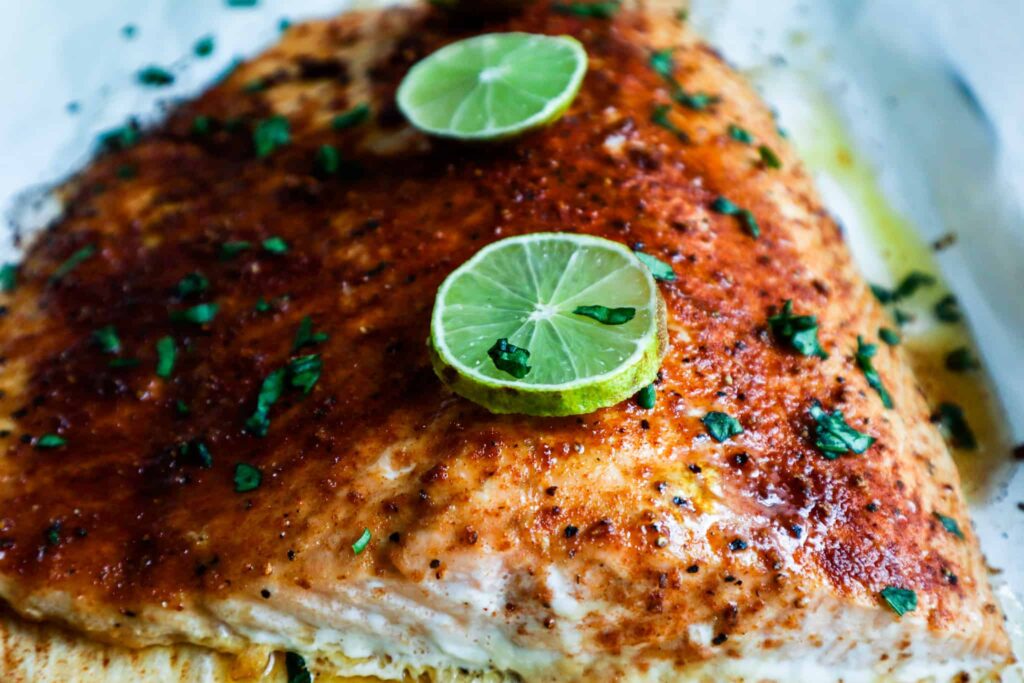
Easy healthy baked salmon ingredients:
- Salmon fillet
- Salt
- Black pepper
- Brown sugar or honey: I find that the touch of sweetness that can be achieved by adding brown sugar or honey can add depth of flavor to the salmon.
- Sweet paprika
- Garlic powder
- Onion powder
- Cayenne pepper: A little bit of cayenne pepper can add a subtle kick to your salmon!
- One tablespoon olive oil
- Fresh cilantro
Which Salmon should you buy?
When buying salmon, many questions come to mind: farmed vs. wild-caught, fresh vs. frozen, skin on vs. skin off, and what type of salmon should I buy? luckily, the answers are simple!
Types of Salmon
I think that any of these types of salmon will work: Atlantic Salmon, Chinook Salmon, Coho Salmon, Pink Salmon, Sockeye Salmon, or King Salmon. (You can try and see for yourself which one you prefer!)
Farmed vs. Wild-caught
I have cooked both farm-raised and wild-caught salmon, and although there is a price difference, wild-caught is my favorite option. Wild-caught salmon tastes better, has better texture, and research suggests that it contains more nutrients.
I have also found that farmed salmon contains pollutants, various toxins, and antibiotics that reduce the overall benefits of consuming the salmon mentioned above. (11)
Fresh vs. Frozen
There is no doubt that fresh anything has more appeal and usually packs better flavors. The same is true for salmon, but fresh salmon is hard to come by, especially if you are not living in a coastal area. Also, the difference in flavor is not huge because frozen salmon is usually flash-frozen, which means it’s frozen on the ship right after it’s caught to preserve freshness!
Skin on vs. Skin off
It all depends! Salmon skin helps protect the fillet from the pan’s heat, cook the salmon more evenly, and retain its delicious juices. If you don’t like the skin, you can easily remove the skin right off once it’s baked and you’re ready to serve. But in recipes like this one (Where you rely on spices to get the most flavor out of your salmon), I used skin off because I prefer to rub the spices on both sides of my fillet and instead used parchment paper to line my baking sheet.
If your fillet has its skin on, you can still rub the spices on the skin side. Get a sharp knife and make a 1 to 1.5 inches (2.5 to 4 cm) long cut almost 0.5 inches (nearly 1 cm) deep. Then start rubbing the spices in just as you would do the skinless side!
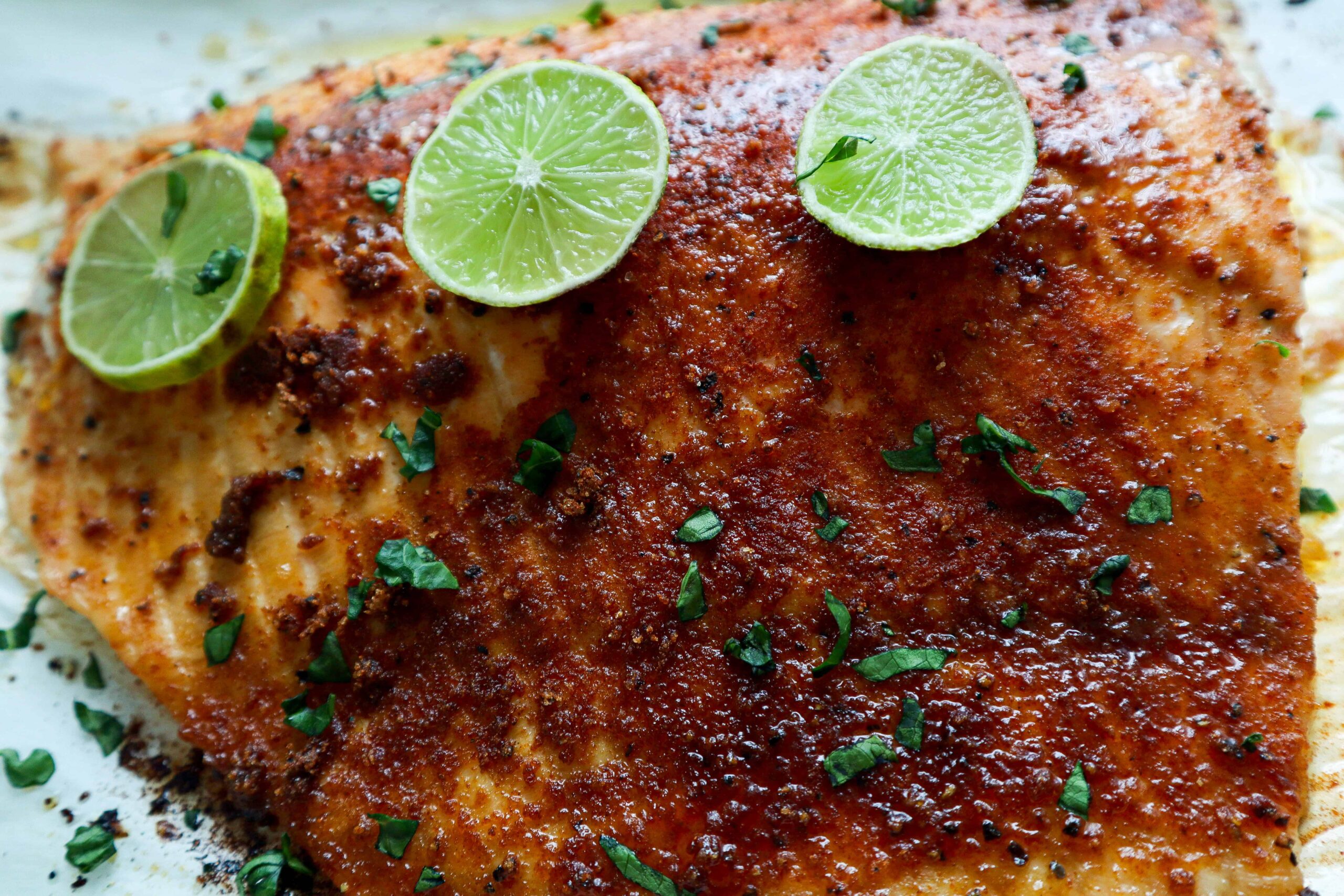
What is the best temperature for baking salmon?
I have tried cooking salmon at different temperatures and while cooking at a high temp. Such as 450°F still works, you can run into the risk of overcooking it.
That’s why I stick with baking at a lower temperature of 375°F (190 °C)to ensure that the salmon is extra moist and not overcooked.
The size and thickness of your fillet matters
- For an average size salmon fillet: cook for 12-13 minutes.
- For a thicker salmon fillet: cook for 13-15 minutes.
- For a whole side of salmon: cook for 15-20 minutes.
Baking tips and health guidelines:
The USDA recommends cooking fish to an internal temperature of 145°F (62.8°C). Yet, it would be best if you did not let it rise to this temperature in the oven because that will usually lead to overcooking. As with most proteins, Salmon’s internal temperature keeps on rising after you stop cooking it.
That’s why I use an instant-read thermometer to check the internal temperature. When it reaches an internal temperature of 125°F – 130°F, I usually take it out of the oven and let it sit for a couple of minutes until it reaches the desired temperature for moist, not-overcooked salmon.
If you don’t have a thermometer, use a fork to cut the salmon. If it flakes apart easily, that means it’s done baking.
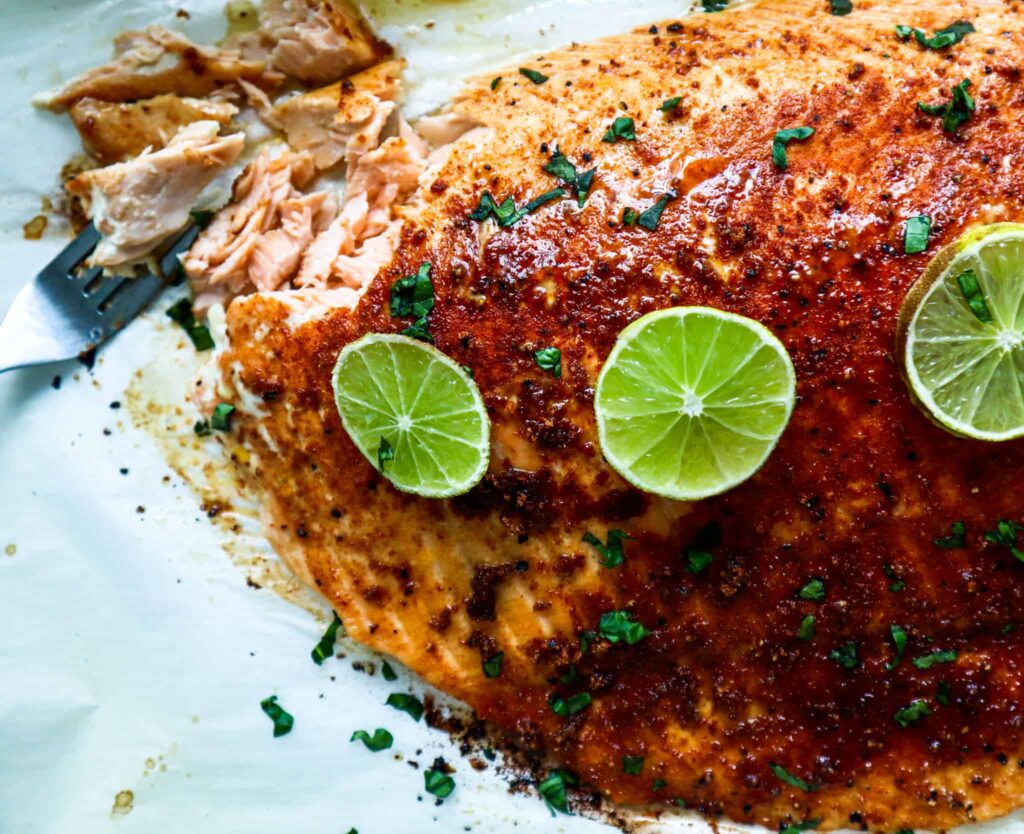
More Salmon Baking Tips
- Season right before baking. Seafood seasonings can cause it to lose its moisture quickly (Mainly because of Salt). That’s why I prefer to season my Salmon right before sliding the pan into the oven.
- That white ooze is just protein! Sometimes a white slimy substance appears on top of your baked salmon; that’s perfectly normal! It’s simply a protein called albumin that becomes solid when heated. Albumin comes out due to high cooking temperatures, so cook your salmon gently to prevent a thick white layer from forming.
- Take it out of the oven 30 seconds to 1 minute earlier. As I mentioned above, salmon will continue to cook as it rests. So taking it out 30 seconds to 1 minute earlier is a sure way to prevent overcooking!
My Favorite Way to Serve Baked Salmon
I usually serve my Baked Salmon with sautéed vegetables and a healthy carb source such as whole wheat pasta or brown rice.
How to store and reheat Baked Salmon?
- Storing: If you have got some leftovers, you can keep them for up to 2 days in the fridge in a sealed container.
- Freezing: Make sure your salmon is completely cool before freezing. Remove the skin, then top it on parchment paper in an air-tight storage container to prevent it from sticking to the sides. It usually stays good for consumption for 45 days. When you are ready to use it, thaw it in the refrigerator overnight.
- Reheating: The key to successfully reheating your salmon (to prevent it from drying out) is low and slow, either in the microwave or oven.
CHECK OUT MORE RECIPES:
Creamy Chicken Fettuccine Alfredo

